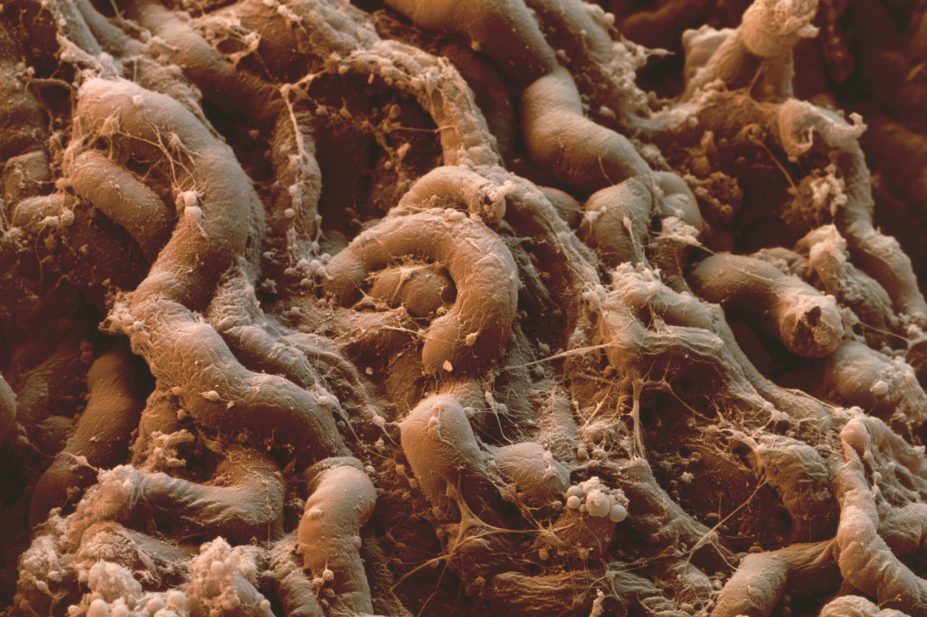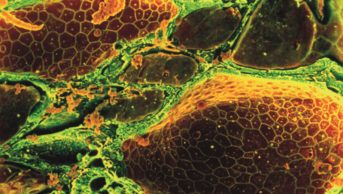
EYE OF SCIENCE/SCIENCE PHOTO LIBRARY
Canagliflozin and dapagliflozin are antidiabetic medicines that inhibit sodium-glucose co-transporter 2 (SGLT2). They lower blood glucose by blocking the reabsorption of glucose by SGLT2 in the proximal convoluted tubule of the kidneys, promoting excretion of excess glucose in the urine[1]
. A third SGLT2 inhibitor, empagliflozin, is due to be launched in the UK in autumn 2014.
This article looks at known and potential interactions with both canagliflozin and dapagliflozin.
Pharmacodynamic interactions
Clinical studies have found the incidence of hypoglycaemia was higher when canagliflozin or dapagliflozin were given with insulin or a sulfonylurea compared with when used alone. This is due to the additive blood glucose lowering effects of these drugs. The dose of insulin or sulfonylureas might therefore need to be reduced if used in combination with SGLT2 inhibitors[1],[2]
.
Both canagliflozin and dapagliflozin can be given with metformin if the patient is at a significant risk of hypoglycaemia or is unable to tolerate sulfonylureas[3],[4]
.
SLGT2 inhibitors can cause diuresis, which can cause volume depletion and hypotension. SLGT2 inhibitors should therefore be used with caution when given with diuretics (especially thiazide and loop diuretics[2]
) or drugs affecting the renin-angiotensin system, such as angiotensin-converting enzyme inhibitors and angiotensin-II receptor antagonists[1]
.
Canagliflozin can cause hyperkalaemia and potassium concentrations should be monitored in patients at increased risk of hyperkalaemia, with renal impairment or taking potassium-sparing diuretics[5]
.
It is recommended that any hypovolaemia should be corrected before starting treatment[1],[2]
and patients taking SLGT2 inhibitors should be told to report symptoms such as postural hypotension and dizziness.
Pharmacokinetic interactions
In-vitro studies have shown that neither canagliflozin nor dapaglifozin are predominantly metabolised by, or affect, the cytochrome P450 enzymes[1],[2]
and potential drug interactions via this mechanism are unlikely to be clinically relevant. However, both canagliflozin and dapagliflozin are extensively metabolised by the UDP-glucuronosyltransferase enzyme UGT1A9.
Rifampicin, a multiple enzyme inducer (possibly including UGT1A9), decreases the patient’s exposure to dapagliflozin and canagliflozin by 22% and 51%, respectively[1],[2],[6]
. However, this decrease is likely to only be clinically important for canagliflozin.
Glycaemic control should be monitored in patients who require canagliflozin and rifampicin concurrently. If additional glycaemic control is required, the dose of canagliflozin can be increased to 300mg daily, provided the usual 100mg dose is well tolerated and the patient’s renal function is satisfactory[1]
.
Canagliflozin has been shown to inhibit the drug transporter P-glycoprotein in vitro, and an in-vivo study found canagliflozin 300mg daily for seven days very slightly increased the patient’s exposure to digoxin, a P-glycoprotein substrate[1]
. Although further study is required, digoxin concentrations should be monitored if used concurrently with canagliflozin.
A pharmacokinetic interaction does not appear to occur between dapagliflozin and digoxin[2],[7]
.
This article has been produced by Harpreet Sandhu, Claire Preston, and Stephanie Jones on behalf of the Stockley’s Drug Interactions editorial team. The book is available in print through Pharmaceutical Press or electronically with quarterly updates through MedicinesComplete.
References
[1] Janssen Pharmaceuticals, Inc. Invokana (Canagliflozin). UK Summary of product characteristics. April 2014.
[2] Bristol Myers Squibb–AstraZeneca EEIG. Forxiga (Dapagliflozin propanediol monohydrate). UK Summary of product characteristics. July 2014.
[3] National Institute for Health and Care Excellence. Canagliflozin in combination therapy for treating type 2 diabetes. London: NICE 2014.
[4] National Institute for Health and Care Excellence. Dapagliflozin in combination therapy for treating type 2 diabetes. London: NICE 2014.
[5] Janssen Pharmaceuticals, Inc. Invokana (Canagliflozin). US Prescribing information. May 2014.
[6] Kasichayanula S, Liu X, Griffen SC et al. Effects of rifampin and mefenamic acid on the pharmacokinetics and pharmacodynamics of dapagliflozin. Diabetes Obes Metab 2013;15:280–283.
[7] Kasichayanula S, Chang M, Liu X et al. Lack of pharmacokinetic interactions between dapagliflozin and simvastatin, valsartan, warfarin or digoxin. Adv Ther 2012;29:163–177.
You might also be interested in…

Thyroid dysfunction and drug interactions
